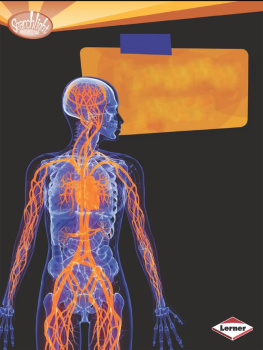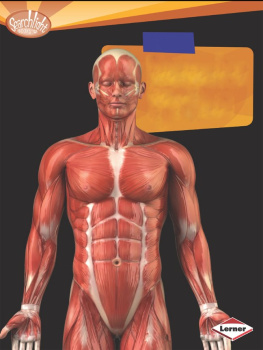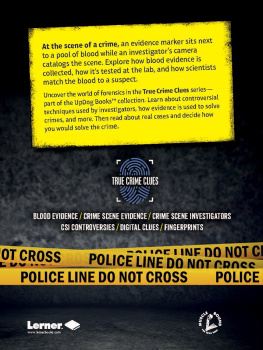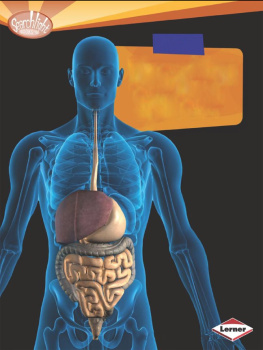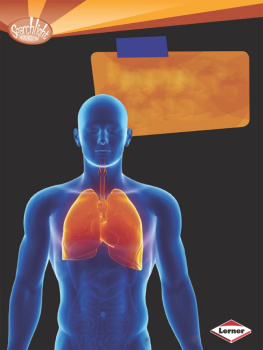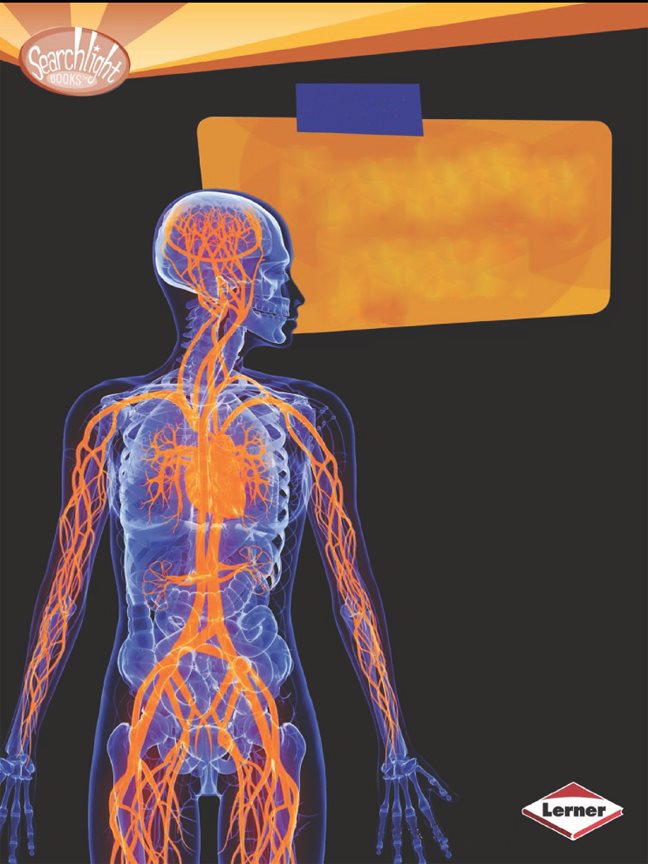Your
Circulatory
System
Conrad J. Storad
To my beautiful, wonderful stepdaughters:
Sarah, the nurse, and Meghan, the teacher.
Thank you for all the love and kindness you
give to me and your mother.
Copyright 2013 by Conrad J. Storad
All rights reserved. International copyright secured. No part of this book may be
reproduced, stored in a retrieval system, or transmitted in any form or by any means
electronic, mechanical, photocopying, recording, or otherwisewithout the prior written
permission of Lerner Publishing Group, Inc., except for the inclusion of brief quotations in
an acknowledged review.
Lerner Publications Company
A division of Lerner Publishing Group, Inc.
241 First Avenue North
Minneapolis, MN 55401 U.S.A.
Website address: www.lernerbooks.com
Library of Congress Cataloging-in-Publication Data
Storad, Conrad J.
Your circulatory system / by Conrad J. Storad..
p. cm. (Searchlight booksTMhow does your body work?)
Includes index.
ISBN 9780761374473 (lib. bdg. : alk. paper)
1. Musculoskeletal systemJuvenile literature. I. Title.
QM178.S86 2013
612.1dc23 2011034264
Manufactured in the United States of America
1 CG 7/15/12
Contents
PARTS
WORKING
TOGETHER ... page
Chapter
PARTS WORKING
TOGETHER
Each part of the body
has a job. The parts
work together. Parts
that work together are
called a system.
The body has many
systems. One system
helps the body turn food into
energy. Another system helps
the body breathe. Another
helps the body to move.
The parts of your body work
together. What are parts
that work together called?
The Circulatory
System
One important body
system is called the
circulatory system.
This systems job is
to pump blood to all
parts of the body.
The circulatory
system is made up
of the heart, the
blood, and many
strong tubes called
blood vessels. The
heart makes the
blood move through
the blood vessels.
Blood vessels carry
the blood to all parts
of the body.
Blood vessels are tubes
that carry blood to all
parts of the body.
Cells
All body parts are made of cells. Cells are so small you
need a microscope to see them. The human body has
many different kinds of cells. It has muscle cells and
bone cells. It has skin cells and brain cells. It has nerve
cells and blood cells.
Your body is made of
millions of tiny cells. A
photographer used a
microscope to take this
picture of cells from
inside a bone.
Every cell needs
food to live. Food
goes into the blood
each time we eat
or drink. Every cell
also needs oxygen.
Oxygen is a gas
in the air. Oxygen
goes into the blood
every time we take
a breath. The blood
carries food and
oxygen to every cell.
Your body breaks down
everything you eat or drink.
Then your blood carries the
food to your cells.
Cells make waste as they do their jobs. The blood
collects the waste and carries it away. Carbon dioxide
is one kind of waste that cells make. Carbon dioxide is
a kind of gas. The blood carries carbon dioxide from the
cells to the lungs. We get rid of carbon dioxide every time
we breathe out. Cells also make other kinds of waste.
The body gets rid of these kinds of waste every time we
go to the bathroom.
WHEN YOU BREATHE OUT, YOU GET
RID OF CARBON DIOXIDE.
Chapter
THE HEART
The heart has a big job to do.
The heart pumps blood to all
parts of the body. It pumps blood
every second. It pumps blood every
day and every night.
The heart can pump
blood because it is made
of muscle. The muscles in
your arms and legs make
your bones move. The muscle
in your heart squeezes to
pump blood through your body.
Your heart never stops
pumping blood. What is
your heart made of?
Your heart is just about
as big as your fist.
The heart works hard. But it is not very big. Your
heart is about the same size as your fist.
The heart pumps blood when we eat. It pumps blood
when we sleep. It pumps blood when we exercise. It
never rests.
Your heart beats on its own. You
dont have to think about making it
pump blood. So you can think about
other things, such as schoolwork.
The Septum
In the middle of the heart is a thick wall of muscle.
This wall is called the septum. The septum separates
the heart into a right half and a left half. The septum
stops blood from leaking from one side of the heart to
the other.
An adults heart weighs
only about ounces (284
grams). That is a little more
than an orange weighs.
Atriums and Ventricles
Each half of the heart is made up of two hollow rooms.
The rooms are stacked one on top of the other. Each
top room is called an atrium . There is a right atrium and
a left atrium. Each bottom room is called a ventricle .
There is a right ventricle and a left ventricle. As the heart
pumps blood, the blood moves through each of these
rooms.
THE PARTS OF
THE HEART
right
atrium
left
atrium
septum
right
ventricle
left
ventricle
Flaps of muscle shut to
keep blood from moving
backward through the heart.

